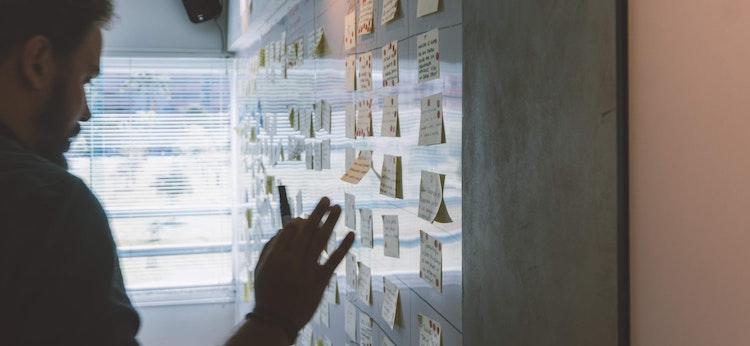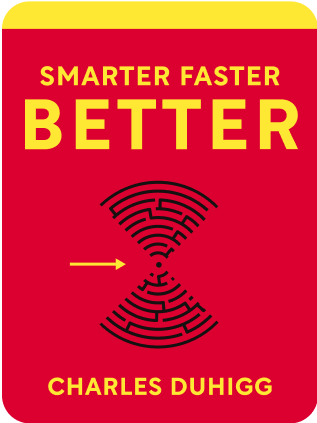

This article is an excerpt from the Shortform book guide to "Smarter Faster Better" by Charles Duhigg. Shortform has the world's best summaries and analyses of books you should be reading.
Like this article? Sign up for a free trial here .
What is the engineering design process? How can you apply it to your life?
The engineering design process can help you formulate different approaches to everyday dilemmas. It prompts you to evaluate which approach is likely to see the greatest success. The process aids in creative problem solving and decision making.
Read more to learn about the engineering design process and its practical applications.
The 5 Steps of the Engineering Design Process
The engineering design process is a data-driven framework for creative problem solving and decision making. While this process originated in the engineering industry, we can apply it to our everyday lives.
The engineering design process is made up of five defined steps:
Step 1: Clearly outline the problem you need to solve or the decision you need to make.
Step 2: Collect data related to this decision or problem. In this context, “data” means any information that could help you to come up with a solution to the problem, or help you to decide the best way forward. This could include:
- Information that you’ve collected through your past experiences—for example, what you’ve learned when making similar decisions in the past, or how similar situations have played out for other people you know
- Information about how the situation and its possible solutions may affect you in the future—for example, will the situation impact your time, your money, or your relationships with others? How could different approaches to the situation change its potential impact on your life?
Step 3: Use this collected data to brainstorm all of the possible approaches you could take for creative problem solving and decision making. What are all of the different choices you could make, and the different paths forward that you could tread?
Step 4: Conduct experiments to test the possible approaches to your problem or decision. For example, imagine what might happen if you pursued a certain choice. Think about what might go well, and what might go wrong. If you’re in a group situation, you can discuss and evaluate these different approaches together.
Step 5: Repeat steps 1 to 4 until an appropriate solution is found.
Benefits of the Engineering Design Process
Using the engineering design process provides several benefits. Firstly, it can help you to make decisions and solve problems more objectively. The process is based on objective raw data, rather than your subjective emotions and biases or the expectations of others.
Secondly, the process may help you to view your past experiences in a different, more positive way. Even bad things that have happened to you and mistakes you’ve made become useful sources of data that you can use in the future.
Thirdly, the process breaks down what can seem like a huge decision or an overwhelming problem into smaller, more manageable steps. It can make your dilemmas feel like much easier hurdles to overcome.
Finally, and most importantly, the engineering design process can help you to overcome the brain’s unhelpful default reaction when we face a difficult decision or problem.
The brain often wants to find resolutions to such situations quickly and easily. It loves to make things simple. So, it streamlines the process of finding a solution as much as possible. It finds a limited frame of reference in which to view the situation. Rather than considering every possible variable that could affect your approach to the situation, it focuses on two or three. It ignores a lot of the data that could help you to make your choice, entering a version of the “information blindness” state.
This unhelpful process can be illustrated through the example of deciding which car to buy. This can be a complicated process: there are many different cars out there, and many variables to consider. The most sensible course of action is to consider all of these variables before making your choice. After all, a car is a big investment: you want to make sure you buy the right one.
However, your brain may choose to focus on only a few variables to try to make the decision easier. For instance, it may reduce the choice to the simple binary of “do I want a car with a built-in GPS or heated seats?” This may make your choice easier in the moment, but it also ignores other, important factors in the choice, such as “can I actually afford this car?”
By using the engineering design process, you can prevent this unhelpful thought process from taking hold. You can break free of an unhelpful, limited frame of reference, and use one that’s more thorough. The process forces you to consider every possible variable involved in a decision and problem as you examine all of the relevant data that’s available to you. Likewise, the process requires you to come up with multiple solutions to a problem, rather than just jumping to the quickest and easiest resolution. You’re more likely to make good decisions and solve problems effectively if you’ve taken this thorough approach.
Example: The Process in Action
Following the success of the Elementary Initiative, the city of Cincinnati tried to replicate the program in struggling high schools. While this did lead to some improvements, teachers felt that the approach wasn’t quite right. High school students have a much shorter window of intervention compared to elementary school students; it can be hard to change their habits and attitudes. Unfortunately, analyzing data in the style of the EI wasn’t necessarily a quick process, so it was easy for this window to be missed.
The teachers felt that what these students needed was a way to get better at making the difficult, life-changing decisions that many of them faced. For example, should they go to college or get a job? Which of their many struggling family members should they help?
To address these issues, the school district set up a new program for high school students. This program aimed to help students to make choices based on objective data, not their emotions or the expectations of their loved ones. It taught the students how to use the engineering design process.
The Engineering Design Process at Western Hills High
At Western Hills High, one of the schools that implemented this new program, a student named Delia Morris signed up for the classes.
Delia was a very gifted student, and her teachers felt she definitely had the potential to go to college. However, many gifted students at Western Hills High were prevented from reaching their full potential due to poverty, and Delia was at risk of this—she had a tough home life.
During Delia’s sophomore year of high school, her older sister had a baby. She asked Delia if she could babysit each afternoon. Delia was under pressure from her father to agree; after all, family helped each other out, right? Delia found herself needing to make a tough decision.
Delia decided to use the engineering design process to work out what to do. She collected data about how babysitting would impact her and her schoolwork; for example, the time it would eat up, and the time she would have left behind to study. She also collected data from the past experiences of people she knew. For instance, when Delia’s sister had agreed to take on a job to help her family, she’d had to put her aspirations – including college – on hold.
Delia analyzed all of the data she’d collected and tested all of the different approaches she could take to the problem. Eventually, she decided that she couldn’t babysit. It was too much of a commitment and would threaten her future. She would be too tired at the end of each day to complete her schoolwork. Her grades would suffer. Likewise, she might start to resent her family. When she explained her reasoning to her father, he agreed with her conclusion. Delia was able to harness the power of data to make the decision that was best for her.
It’s easy to see how the engineering design process fosters creative problem solving and decision making, resulting in greater success.

———End of Preview———
Like what you just read? Read the rest of the world's best book summary and analysis of Charles Duhigg's "Smarter Faster Better" at Shortform .
Here's what you'll find in our full Smarter Faster Better summary :
- Why becoming more productive isn’t about working longer hours or constantly pushing yourself to do more
- The 8 principles for improving productivity
- How to create a work culture in which each employee is truly valued







Thanks a lot for your efforts to produce such an impressive article